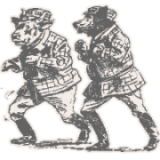The fake laug h: it’s something we all do, often out of politeness or respect, or to conceal true feelings. And unfortunately, there’s bad news for offices filled with forced laughter: a new study finds that two-thirds of people can distinguish real laughter from fake laughter.
h: it’s something we all do, often out of politeness or respect, or to conceal true feelings. And unfortunately, there’s bad news for offices filled with forced laughter: a new study finds that two-thirds of people can distinguish real laughter from fake laughter.
Which prompts the questions: Is there enough genuine laughter in your workplace? And what can you do to turn forced enjoyment into genuine enthusiasm?
To see how well people can distinguish between fake and genuine laughter, Greg Bryant, associate professor of communication studies at UCLA, used two sound bites: one with laughter taken from a conversation between friends and the other taken from laughter on command.
Bryant found that two-thirds of the people tested could distinguish real laughter from fake laughter.
The difference lies in the acoustic features. Genuine laughter tends to be in a higher pitch, louder, and breathier. This is because real laughter is animalistic—it comes from an emotional vocal system found in other animals—whereas fake laughter comes from a human-specific speech system.
So why does genuine laughter matter? It increases oxygen, endorphins, and blood flow to the brain—which happens to be ingredients to clear thinking and creativity.
The same can’t be said for fake laughter, which activates a different region of the brain, according to a study by the University of Royal Holloway in London.
The benefits of genuine laughter in a work place can boost profits while reducing tension. A happy and positive workplace produces loyalty and increased productivity.
Want a sure way to get genuine laughs from your employees?
Our scavenger hunts are designed to foster laughter to induce greater teamwork. Not only will they bond over solving our tricky, humorous questions, they will be reminiscing and laughing about their experience for weeks to come!